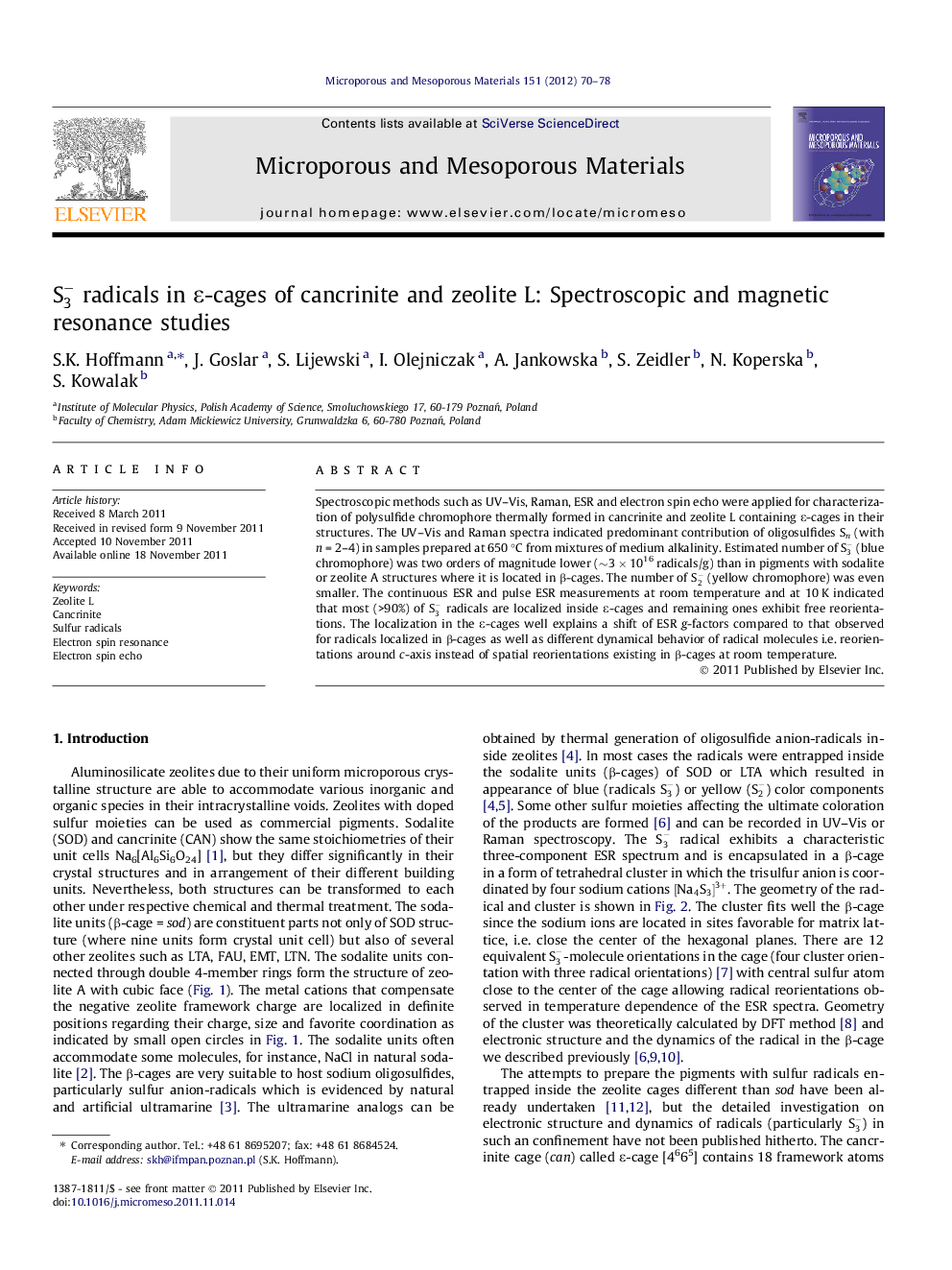| Article ID | Journal | Published Year | Pages | File Type |
|---|---|---|---|---|
| 74914 | Microporous and Mesoporous Materials | 2012 | 9 Pages |
Spectroscopic methods such as UV–Vis, Raman, ESR and electron spin echo were applied for characterization of polysulfide chromophore thermally formed in cancrinite and zeolite L containing ε-cages in their structures. The UV–Vis and Raman spectra indicated predominant contribution of oligosulfides Sn (with n = 2–4) in samples prepared at 650 °C from mixtures of medium alkalinity. Estimated number of S3- (blue chromophore) was two orders of magnitude lower (∼3 × 1016 radicals/g) than in pigments with sodalite or zeolite A structures where it is located in β-cages. The number of S2- (yellow chromophore) was even smaller. The continuous ESR and pulse ESR measurements at room temperature and at 10 K indicated that most (>90%) of S3- radicals are localized inside ε-cages and remaining ones exhibit free reorientations. The localization in the ε-cages well explains a shift of ESR g-factors compared to that observed for radicals localized in β-cages as well as different dynamical behavior of radical molecules i.e. reorientations around c-axis instead of spatial reorientations existing in β-cages at room temperature.
Graphical abstractFigure optionsDownload full-size imageDownload as PowerPoint slideHighlights► We examined cancrinite and zeolite L with polysulfides as pigments. ► S3- radical is localized in the can-type cage. ► The dynamics of radicals is strongly restricted as compared to zeolite A. ► The sample color is determined by shoulder of UV absorption of various polysulfides.
